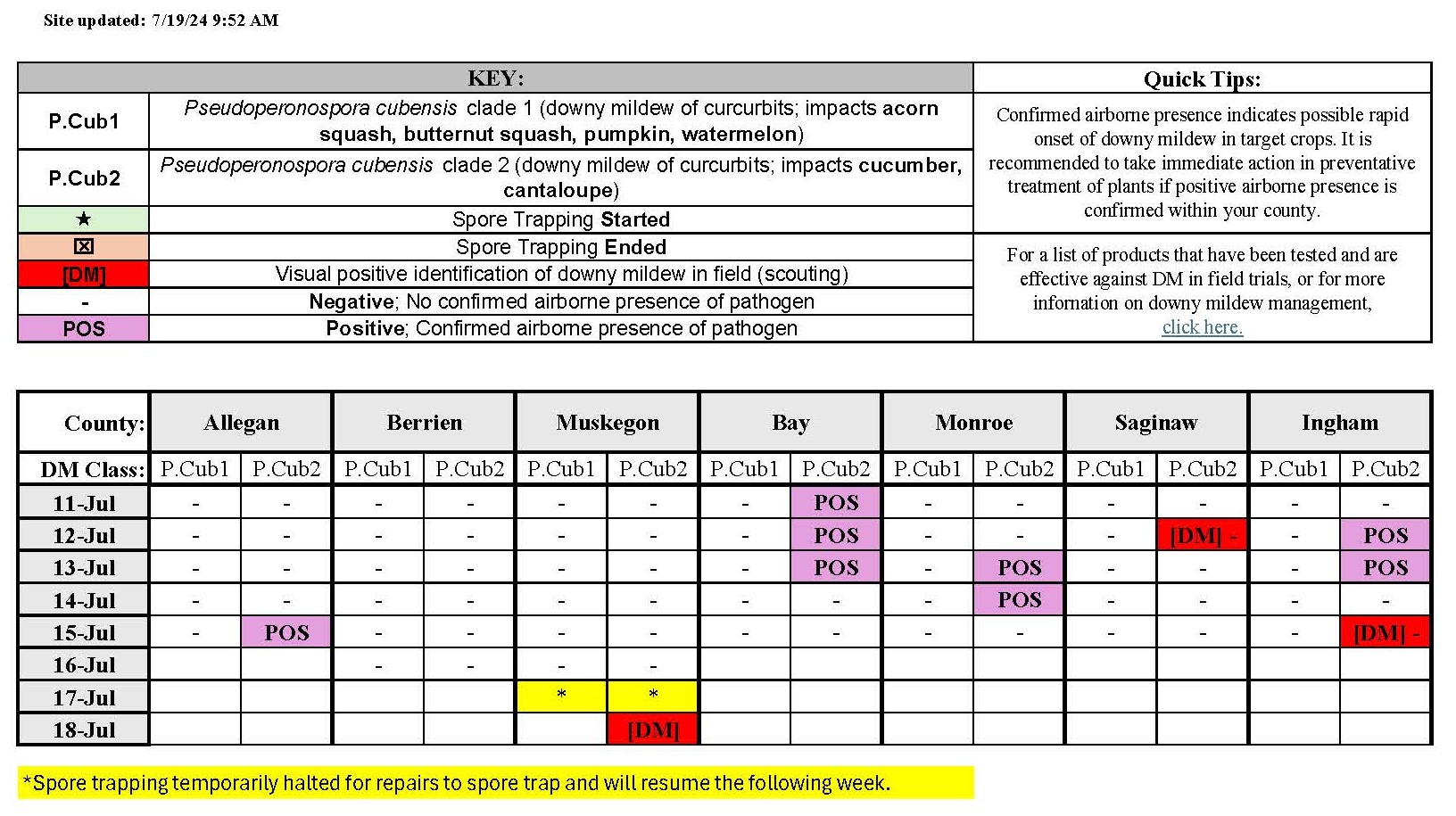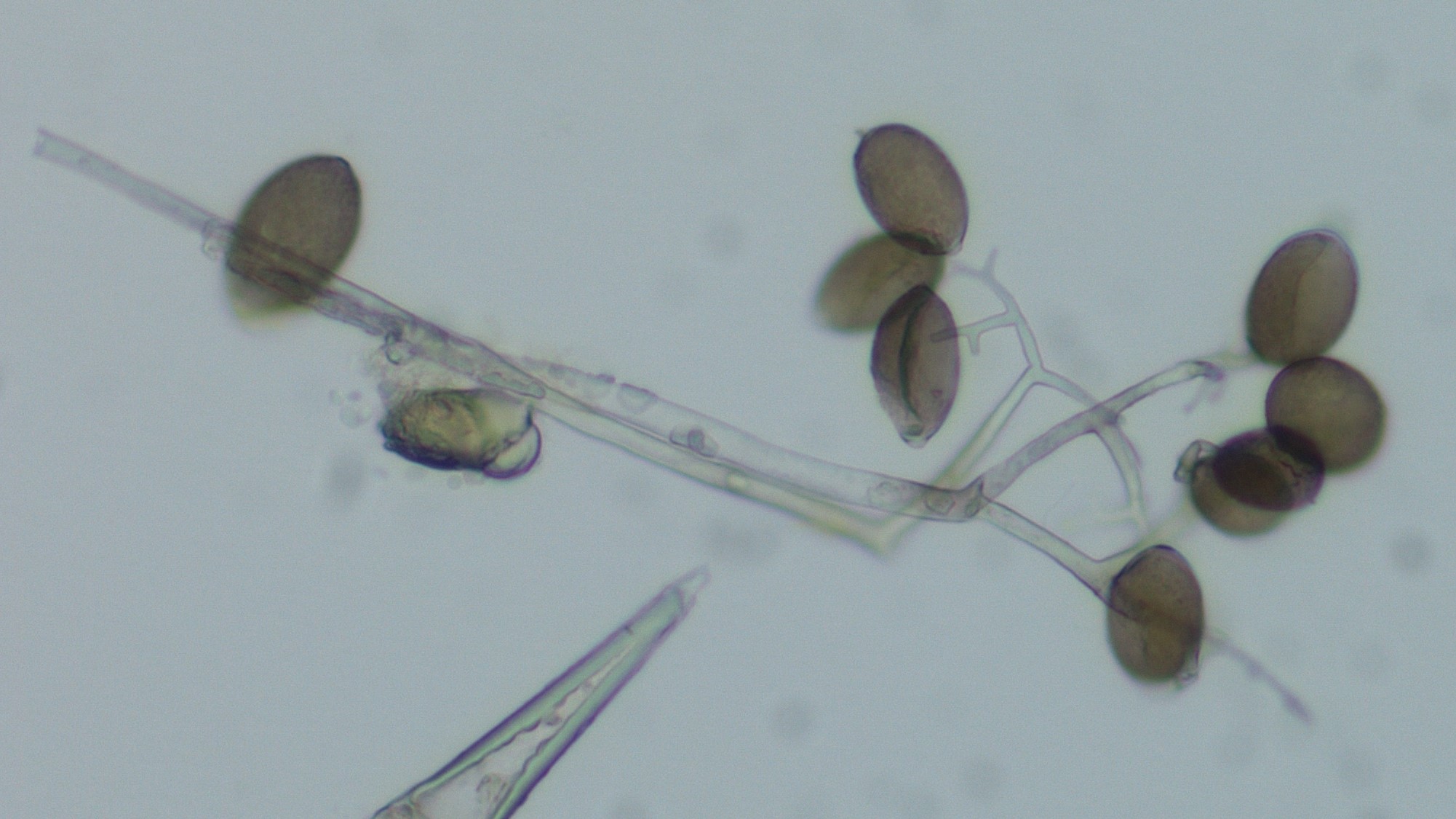Downy mildew confirmed on cucumbers in eight Michigan counties
Growers are urged to implement an aggressive fungicide program immediately.

The downy mildew pathogen has had the upper hand in recent weeks with the overcast, humid and wet weather that our production regions have experienced. With the more moderate temperatures that are predicted, the risk of significant pathogen spread and crop infection greatly increases.
While the first pickling cucumber crop of 2024 has been harvested with little disease issue, the subsequent pickle crops are going to be a challenge given the amount of downy mildew that has been reported in the state during the last few days. The outbreak (Fig. 1) is in pickling cucumber crops in Washtenaw, Saginaw, Bay, Tuscola, Iosco, Arenac, Muskegon and Ingham counties and has unfolded in a short time (16 days).
There are positive spore trap results for the southwest region of the state indicating that the pathogen is widespread. Even the cotyledons of an emerging cucumber crop can become infected and have downy mildew symptoms. Several years ago, our state experienced a similar situation which proved to be very challenging and expensive. The cucumber yield is most likely to be impacted when the plants become infected early and the pathogen is not controlled.
The list of proven effective fungicides is shrinking as the downy mildew pathogen becomes resistant to those fungicides that had previously been highly effective. Each year, this situation becomes more worrisome. The remaining downy mildew active ingredients must be used in a tank-mix with the protectant fungicides of either chlorothalonil (Bravo WeatherStik is an example) or mancozeb (Roper is an example). This year, we will likely need an aggressive spray program that alternates among our proven effective fungicides.
It is important that cucumber growers use proven downy mildew fungicides. These fungicides were effective in our 2023 research field plots and include:
- Elumin + chlorothalonil or mancozeb
- Omega (Orbus) + chlorothalonil or mancozeb
- *Orondis Opti (chlorothalonil is part of the premix, additional chlorothalonil is suggested [see label for maximum chlorothalonil rates])
- Previcur Flex + chlorothalonil or mancozeb
- *Ranman + chlorothalonil or mancozeb
- Zampro + chlorothalonil or mancozeb
*Products considered to be especially effective in Michigan based on yearly, season-long field trials.
Due to the rapidly moving outbreak in the state and the weather that is favorable for disease development and pathogen spread, the spray interval should not be stretched beyond 7 days. This interval should not be an issue if the recommended fungicides are used in alternation. Look at the fungicide labels carefully to ensure that you’re within the guidelines; the label is the law!
Keeping an eye on the spore trap results can be helpful in knowing when and how frequently the cucumber downy mildew pathogen is being found in air samples in our major production areas (Fig. 3). Visit the Downy Mildew News for spore trap results and current downy mildew news.


This material is based on work is supported by MSU Project GREEEN, a Michigan Specialty Crop Block administered by the Michigan Vegetable Council, the Agricultural Research Fund and the Pickle and Pepper Research Committee of Pickle Packers International, and the National Institute of Food and Agriculture, U.S. Department of Agriculture, award number 2020-51181-32139.



 Print
Print Email
Email